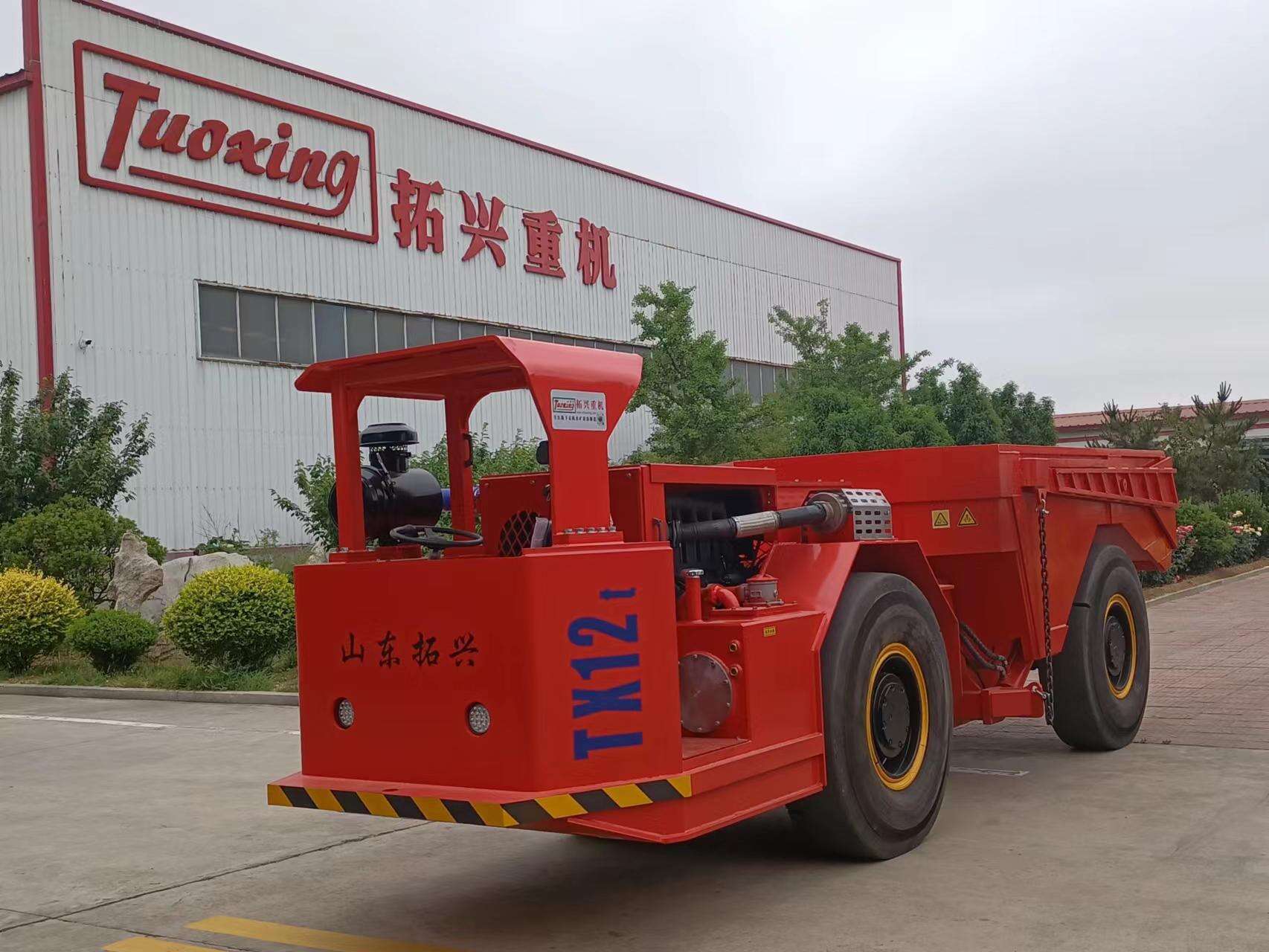Optimizing Deep Mining Operations with Advanced Underground Haulage Solutions
Deep mining operations face unique logistical challenges that demand specialized equipment capable of functioning in extreme subsurface conditions. Underground trucks have emerged as critical assets in these environments, offering unparalleled efficiency gains compared to traditional ore transport methods. These purpose-built vehicles combine robust construction with intelligent design features to overcome depth-related obstacles while maintaining productivity. From navigating steep underground ramps to operating in high-temperature zones, modern underground trucks incorporate technologies specifically developed for the rigors of deep mining. Their ability to move substantial payloads through confined spaces transforms material handling logistics at depth, directly impacting a mine's profitability and operational viability.
Navigating Depth-Related Challenges
Steep Ramp Haulage Capabilities
Underground trucks designed for deep mining sites feature enhanced powertrains and braking systems that handle extreme grades exceeding 20% inclination. Advanced torque vectoring systems distribute power optimally across multiple axles when climbing fully loaded, preventing wheel spin on slippery ramp surfaces. Engineered braking systems with dynamic retardation control maintain safe descent speeds with heavy payloads, reducing brake wear common in deep mine applications. Some underground truck models incorporate regenerative braking technology that converts downhill momentum into reusable energy, simultaneously improving efficiency and reducing heat generation in deep workings. These specialized capabilities allow mines to construct more direct vertical transport routes, minimizing the spiral ramp lengths required to access deep ore bodies. The resulting reduction in development time and costs significantly improves the economics of deep mining projects where traditional haulage methods would prove impractical.
High-Temperature Operation Features
As underground trucks descend beyond 1,000 meters, they encounter ambient temperatures that challenge conventional equipment. Purpose-built deep mining trucks integrate cooling systems that maintain optimal operating temperatures for both mechanical components and operator cabins. Refrigerated air conditioning units create habitable environments for drivers despite surrounding rock temperatures exceeding 50°C. Critical components like hydraulic systems and electrical connections use heat-resistant materials and specialized lubricants formulated for high-temperature performance. Some advanced underground truck models feature thermal monitoring systems that automatically adjust performance parameters to prevent overheating in extreme conditions. These temperature management capabilities allow continuous operation in deep stopes where less specialized equipment would require frequent cooling breaks or suffer premature component failure. The ability to maintain productivity in increasingly deep, hot environments makes underground trucks indispensable for mines pursuing deeper ore reserves.

Productivity Enhancements at Depth
Increased Payload Density
Modern underground trucks achieve greater efficiency in deep mining through optimized weight distribution and compact designs. Deep mining variants often feature reinforced frames that support higher payload capacities without increasing overall vehicle dimensions - critical for navigating the confined spaces of deep underground workings. Strategic use of high-strength, lightweight alloys allows for larger haulage volumes while maintaining structural integrity under heavy loads. Some manufacturers offer underground trucks with adjustable suspension systems that automatically compensate for payload weight, ensuring optimal traction and stability on deep mine ramps. These payload innovations enable fewer trips to move the same ore quantity, directly reducing energy consumption per ton and minimizing traffic congestion in deep underground haulage networks. The cumulative effect significantly boosts daily tonnage from deep mining zones where transport efficiency directly impacts profitability.
Continuous Operation Systems
Deep mining operations benefit from underground trucks designed for minimal downtime in challenging environments. Quick-change battery systems on electric models allow for sub-10-minute power source swaps rather than lengthy charging delays. Diesel-electric hybrid underground trucks provide uninterrupted operation by automatically switching power sources when battery levels deplete. Some deep mining sites utilize overhead charging systems that replenish batteries while underground trucks load or dump, effectively eliminating dedicated charging stops. Advanced predictive maintenance systems monitor component wear in real-time, scheduling service during planned breaks rather than causing unproductive downtime. These continuous operation features prove particularly valuable in deep mines where equipment accessibility for repairs becomes increasingly difficult with depth. The resulting improvement in asset utilization rates helps offset the higher operating costs typically associated with deep mining activities.
Safety and Infrastructure Advantages
Reduced Deep Mine Infrastructure Demands
Underground trucks decrease the extensive infrastructure requirements traditionally associated with deep mining operations. Their ability to negotiate steep ramps reduces the need for expensive vertical hoisting systems in certain deposit geometries. Flexible haulage routes allow mines to delay or avoid costly shaft-sinking projects during early development phases. Modern underground trucks generate less heat and require less ventilation than traditional deep mining equipment, lowering cooling system capital costs. Some electric underground truck models actually improve underground air quality by capturing particulate matter through regenerative braking systems. These infrastructure advantages make underground trucks particularly valuable for mid-sized mining companies pursuing deep deposits where massive capital investments in traditional vertical transport systems might prove economically prohibitive.
Enhanced Deep Mining Safety Protocols
Underground trucks contribute to safer deep mining operations through multiple integrated safety systems. Proximity detection technology alerts operators to personnel or obstacles in low-visibility deep mine environments. Automated speed governors prevent unsafe velocities on steep declines where runaway vehicles pose catastrophic risks. Emergency braking systems engage automatically if hydraulic pressure drops or the operator becomes unresponsive. Many deep mining underground trucks now feature real-time stability monitoring that warns of potential rollover conditions on uneven terrain. These safety features complement the trucks' inherent advantages over traditional rail or conveyor systems in deep mines, where rapid evacuation routes and flexible access become increasingly important with depth. The combination of active and passive safety systems in modern underground trucks helps mining companies mitigate the elevated risks associated with deep mining activities.
Technological Integration
Digital Fleet Management Systems
Deep mining operations maximize underground truck efficiency through advanced digital monitoring platforms. Real-time tracking systems optimize traffic flow in complex deep mine haulage networks, preventing bottlenecks at merge points or loading zones. Predictive analytics software processes data from onboard sensors to forecast maintenance needs before failures occur. Some mines integrate underground truck positioning data with ventilation on-demand systems, reducing cooling costs by adjusting airflow based on actual equipment locations. These digital tools become increasingly valuable in deep mining scenarios where manual monitoring of widespread operations proves impractical. The operational intelligence gathered from underground truck fleets helps mine planners optimize development strategies as operations progress deeper into ore bodies.
Automation in Deep Mining Applications
Underground trucks stand at the forefront of autonomous technology adoption in deep mining environments. Semi-autonomous control systems allow single operators to manage multiple underground trucks from surface control rooms, reducing the number of personnel required at depth. LiDAR-equipped vehicles create continuously updated 3D maps of deep mine workings, enabling precise navigation despite limited GPS availability underground. Some mines now utilize fully autonomous underground trucks for repetitive haulage routes in ultra-deep zones where human exposure to heat and pressure poses health risks. These automation technologies not only improve efficiency but also help address the growing challenge of attracting skilled personnel to work in increasingly deep and demanding mining environments. The data collected by automated underground trucks also informs predictive maintenance programs and helps optimize deep mine design over time.
FAQ
How do underground trucks handle increasing rock pressure at depth?
Specialized frame designs with reinforced joints and pressure-tolerant components maintain structural integrity under deep mine ground stresses.
What's the maximum depth currently feasible for underground truck operations?
Advanced models now operate effectively at depths exceeding 2,500 meters with proper temperature and pressure management systems.
Can underground trucks replace traditional hoisting systems completely?
While they can't eliminate hoisting in all scenarios, underground trucks significantly reduce reliance on vertical transport for many deep mining applications.
